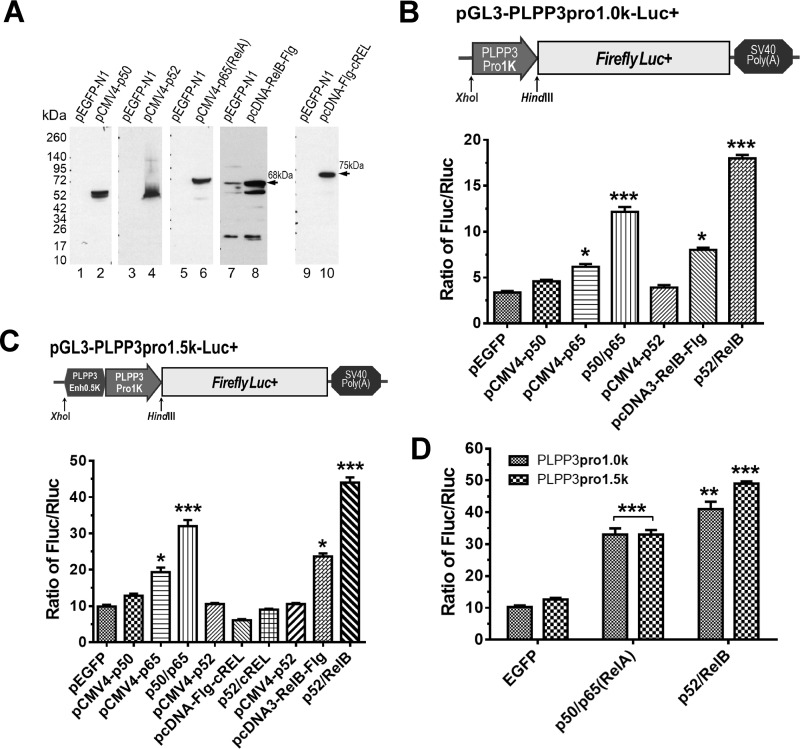Figure 1.
Identification and functional activity of NF-κB response elements in the human PLPP3 promoter. A, cDNAs encoding epitope-tagged forms of five NF-κB protein subunits were overexpressed by transfection of HEK293T cells using pcDNA vectors. Cells were grown for 24 h, and recombinant proteins were detected by immunoblotting using relevant antibodies. B, top panel, diagram of PLPP3 promoter reporter constructs containing the ∼1000-bp upstream sequence of the translational start site including the 569 bp 5′ UTR sequence. Bottom panel, Luciferase activity in HEK293T cells that were cotransfected with the PLPP3 promoter reporter vector and with constructs containing a or combinations of NF-κB transcription factors, as indicated in the legend. C, top panel, the experiment shown in B was repeated using a PLPP3 reporter constructs containing an additional ∼500-bp sequence upstream of the ∼1-kb promoter/5′ UTR which, as our bioinformatic analysis suggested, might function as a transcriptional enhancer. Bottom panel, luciferase activity after cotransfection of this ∼1500-bp PLPP3 promoter/enhancer reporter vector with the indicated NF-κB transcription factors. D, the apparent functional differences between the PLPP3 promoter (∼1000 bp) and the promoter/enhancer (∼1500 bp) in their responses to RelA or RelB were compared directly in a single experiment. The data shown are representative of experiments that were repeated at least three times. Luciferase activity is presented as the ratio of Firefly to Renilla luciferase activity (Fluc/Rluc). Summarized data are means ± S.D. The p values for D were calculated using two-tailed paired t tests and for B and C using one-way ANOVA with Greenhouse–Geisser correction and Tukey's multiple comparisons tests. *p ≤ 0.05, **p ≤ 0.01, ***p ≤ 0.001.

